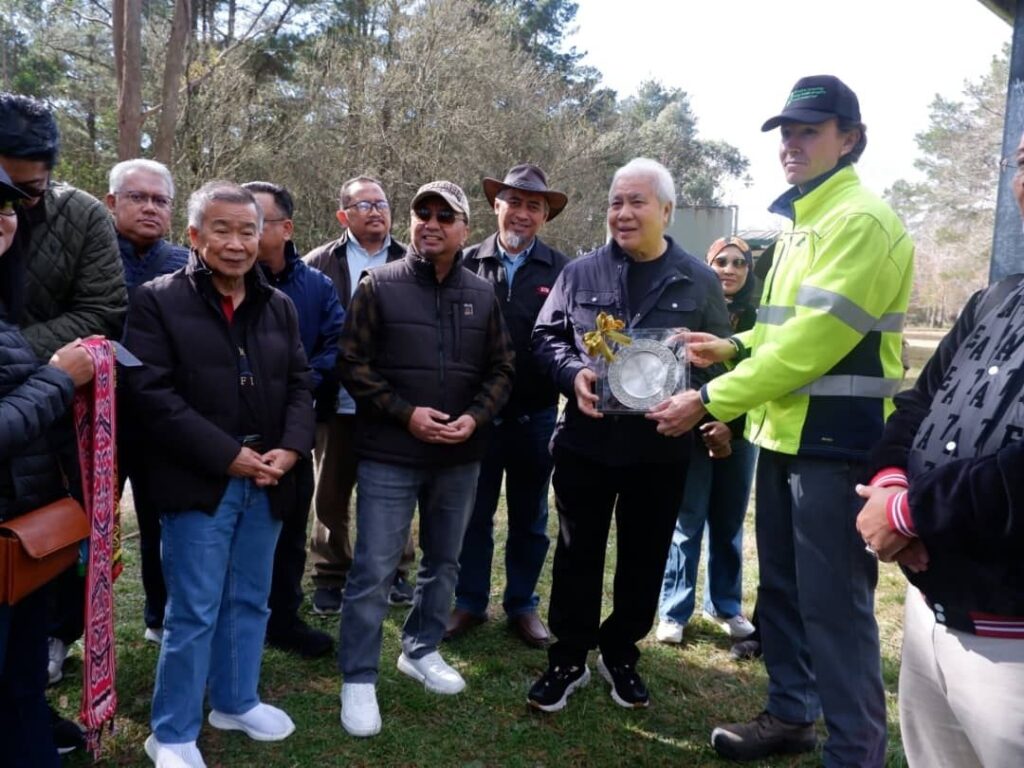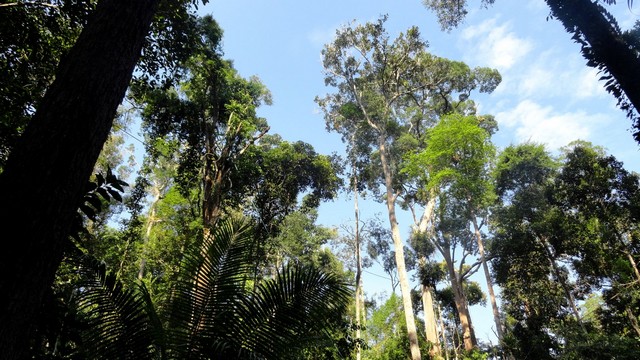Forest are essential for the well-being of both the environment and humanity.
They provide critical resources, including clean air, water, food, timber, and a wealth of biodiversity.
However, rapid deforestation, illegal logging, and unsustainable land use pose significant threats to these vital ecosystems.
To address these challenges, sustainable forest management has become an essential practice worldwide.
This article explores the importance of sustainable forest management, especially in tropical regions like Sarawak, Malaysia, where forests contribute both economically and ecologically.
What is Sustainable Forest Management?
Sustainable forest management refers to the practice of managing forest resources in a way that meets the needs of the present without compromising the ability of future generations to meet their own needs.
This involves balancing the social, economic, ecological, and cultural functions of forests, ensuring that they remain healthy and productive over time.
For tropical regions like Sarawak, the sustainable management of forests ensure that vital resources such as timber, medicinal plants, and non-timber products are available to support local livelihoods.
Simultaneously, these practices preserve biodiversity and help mitigate the impacts of climate change by protecting vital carbon sinks.
The Core Principles of Sustainable Forest Management
Sustainable forest management is guided by several key principles. One of the most important is the conservation of biodiversity.
Forests are home to a vast array of species, and a well-managed forest ensures that these species continue to thrive by maintaining a variety of habitats and regulating essential environmental processes, such as water quality and soil integrity.
Protecting biodiversity also often involves strategies like creating biological corridors that connect isolated forest areas, helping maintain the health of entire ecosystems.
In addition to protecting biodiversity, sustainable forest management also emphasizes long-term productivity.
Rather than exploiting forests to the point of depletion, it focuses on practices such as selective logging and thinning, which allow for forest regeneration and the continued availability of forest products.
This method helps ensure that forest resources are harvested at a rate that does not exceed their ability to recover.
This focus on maintaining forest structure and supporting regrowth can also provide economic benefits, as healthy forests are sustainable sources of timber and other valuable resources over time.
Social and cultural considerations also play a significant role in sustainable forest management.
Forests provide invaluable cultural and spiritual value to many communities, particularly indigenous peoples with deep historical connections to the land.
As such, sustainable forest management must involve these communities in decision-making processes and consider their knowledge and practices that have supported forest ecosystems for generations.
Equally important is the economic aspect.
Forest management should allow for the responsible extraction of resources like timber and non-timber products while ensuring that economic activities contribute to the prosperity of local communities without harming the forest’s long-term health.
Sustainable Forest Management in Sarawak
In Sarawak, located on the island of Borneo, sustainable forest management is a crucial part of balancing the region’s economic ambitions with its environmental responsibilities.
Sarawak is home to some of the world’s richest rainforests, which support a diverse array of plant and animal species, many of which are unique to the region.
These forests also play a critical role in the local and national economy, particularly through timber extraction and palm oil production.

However, the rapid expansion of agricultural land, along with illegal logging practices, has put pressure on the sustainability of these valuable ecosystems.
The Sarawak government has committed to sustainable forest management, adopting pracrices such as selective logging to reduce environmental damage.
The Sarawak Forest Department plays a pivotal role in promoting these practices, helping to ensure that timber harvesting is done responsibly.
Additionally, Sarawak has established forest reserves to protect key areas of biodiversity and has stepped up efforts to combat illegal logging.
Furthermore, the state has invested in reforestation and afforestation programs aimed at restoring degraded areas and improving forest cover, contributing to the overall health of the region’s forests.
These programs are vital for both carbon sequestration and for maintaining the benefits forests provide to local communities.
Challenges Facing Sustainable Forest Management
Despite the significant efforts made in Sarawak and other regions, implementing sustainable forest management faces several challenges.
One of the major issues is illegal logging, which continues to be a significant threat.
Despite stringent regulations, illegal activities undermine efforts to protect forests by encouraging uncontrolled deforestation.
This has detrimental effects not only on biodiversity but also on the integrity of forest management practices in place.
Another challenge is the conflict between conservation efforts and competing land uses.
The growing demand for land for agricultural development, particularly for palm oil plantations, places immense pressure on forests.
This results in the clearing of vast areas of forest, which often conflicts with efforts to preserve these ecosystems.
The complexity of balancing economic growth with conservation remains a major hurdle in the region’s forest management strategy.
The ongoing impacts of climate change also present significant challenges.
Changes in rainfall patterns, rising temperatures, and the increased frequency of forest fires have added new uncertainties to the management of forests.
These factors make it harder to predict the long-term health and sustainability of forests, complicating efforts to ensure they can continue to provide essential services like water filtration and carbon sequestration.
Economic pressures also play a crucial role.
In some instances, the immediate economic returns from logging and converting forests for agricultural purposes can overshadow the long-term benefits of maintaining these ecosystems.
The need for short-term profits often complicates decision-making, especially when it comes to large scale logging projects or the conversion of forests for industrial agriculture.
The Way Forward
Looking ahead, the future of forest management will require continued collaboration between governments, industries, and local communities.
There is a need to strengthen certification schemes, such as the Forest Stewardship Council (FSC), to ensure responsible sourcing of forest products.
These schemes will provide consumers with clearer choices and companies with the incentives to support sustainable practices.
Empowering local and indigenous communities is also critical for long term success.
Their traditional knowledge and sustainable practices are invaluable resources for managing forests in a way that benefits both people and the environment.
Including these communities in forest governance will not only help protect the forest but also provide them with equitable opportunities to benefit from forest resources.
Finally, promoting ecotourism and the sustainable harvesting of non-timber forest products offers opportunities to balance economic development with conservation.
These initiatives can provide sustainable income for local communities while preserving the ecological health of forests.
Reforestation and habitat restoration efforts will also play an increasingly important role in ensuring the longevity of Sarawak’s forests.
Sustainable forest management is essential for the health and survival of forests, their ecosystems, and the countless people and species that depend on them.
In Sarawak, it Is a critical stratedy for managing the region’s forest in a way that preserves their ecological integrity while providing economic benefits to local communities.
Despite the challenges, continued commitment to sustainability, coupled with stronger collaboration and innovative solutions, will ensure that forests remain a vital resource for future generations.
Reference
AINI SELIKANG. (2024, August 14). Sarawak Dan Australia Tingkatkan Kerjasama Dalam Pengurusan Hutan Mampan | Suara Sarawak. Suara Sarawak. https://suarasarawak.my/sarawak-dan-australia-tingkatkan-kerjasama-dalam-pengurusan-hutan-mampan/
Bernama. (2025). Sarawak buat pelaburan strategik dalam pengurusan hutan lestari. Astroawani.com. https://www.astroawani.com/berita-malaysia/sarawak-buat-pelaburan-strategik-dalam-pengurusan-hutan-lestari-485345
Kerajaan Sarawak meterai MoU dengan Australia National University. (2024, August 13). Utusanborneo.com.my. https://www.utusanborneo.com.my/2024/08/13/kerajaan-sarawak-meterai-mou-dengan-australia-national-university
Mardzuki, M. (2024, August 27). Kemampuan Sarawak jadi Bateri ASEAN, hab tenaga hijau serantau bukan retorik. Utusanborneo.com.my. https://www.utusanborneo.com.my/2024/08/27/kemampuan-sarawak-jadi-bateri-asean-hab-tenaga-hijau-serantau-bukan-retorik
Mohd, A. (2020). Penanaman akuaponik dalam rumah hijau. Harian Metro. https://doi.org/1009103/HM_728x90_c
News – Laman Web Jabatan Premier Sarawak. (2024). Sarawak.gov.my. https://premierdept.sarawak.gov.my/web/subpage/news_view/9610/UKAS






